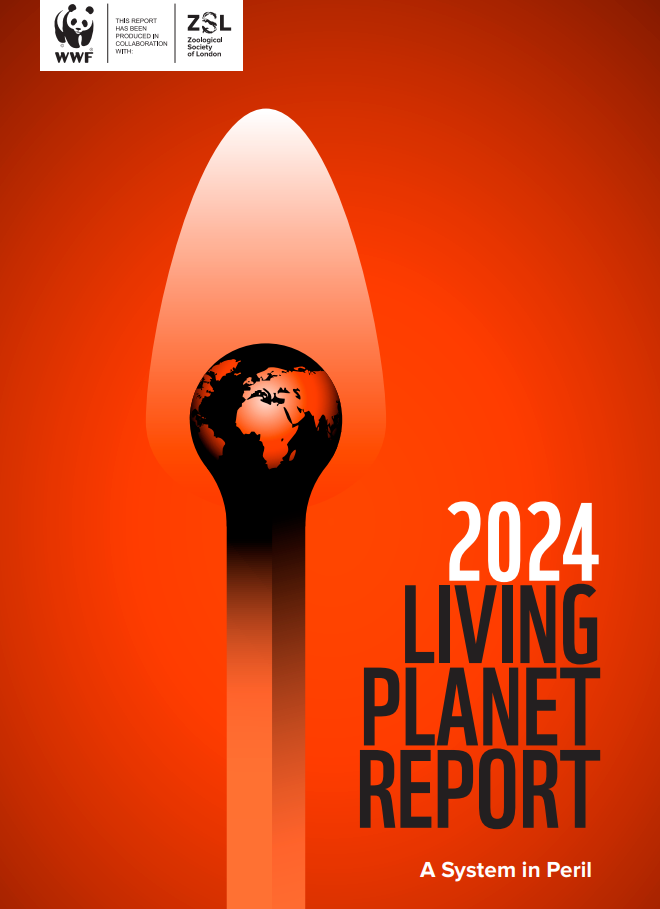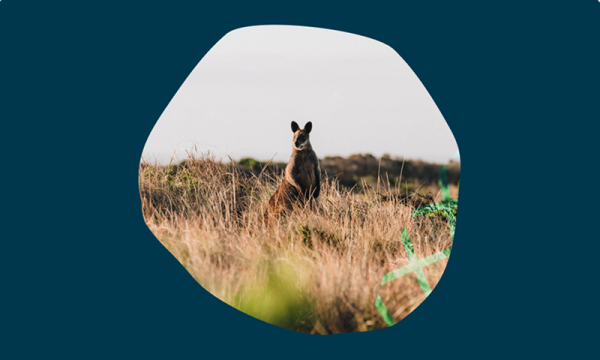Overview
Welcome to the first stage of the Nature Matters Guide.
In this stage, the focus is on building awareness of:
- the essential role of nature in supporting economic resilience
- the Australian and international context for action on nature
- why nature-related action matters for sustainable and resilient business.
Nature matters
Nature is fundamental(Opens in a new tab/window) to our economy, climate, health and wellbeing. Businesses depend(Opens in a new tab/window) on the health and resilience of nature, providing resources for supply chains and stabilising the climate and financial system.
Nature loss poses risks(Opens in a new tab/window) to business. In 2020, the World Economic Forum (WEF) reported(Opens in a new tab/window) that over 50% of global gross domestic product (GDP) is moderately or highly dependent on nature and its services – making it vulnerable to risks from nature loss. Business has a vital role to play in ensuring a sustainable future and supporting Australian and international goals.
‘Every business relies on nature for resources and ecosystem services such as water, food, fibre, minerals, pollination of crops, water filtration and climate regulation, both in their own operations and supply chains, and for their employees and customers.’ – Business for Nature(Opens in a new tab/window)
The state of Australia’s environment
The 2021 State of the Environment Report(Opens in a new tab/window) found that the state of Australia’s environment is ‘poor and deteriorating’ due to increasing pressures from:
- climate change
- habitat loss
- invasive species
- pollution
- resource extraction.
Climate change is affecting all aspects of the environment. Land and ocean temperatures are increasing, driving changing rainfall patterns and extreme weather events that affect our soils, water, vegetation and all the species that rely on them.
Learn more about the current state of nature

Australia State of the Environment 2021

Living Planet Report 2024 - A System in Peril
Valuing nature
Our economic systems have historically failed to value nature. This economy-wide failure to value nature is amplified by businesses' short term focus on profit and financial return.
Gross Domestic Product (GDP), the standard measure of a country’s economic health, does not account for environmental degradation or the depletion of natural resources. As a result, our economic activity has caused rapid changes in earth systems(Opens in a new tab/window). The Dasgupta Review(Opens in a new tab/window), commissioned by the UK Treasury in 2019, argues that nature is our most precious asset(Opens in a new tab/window) – and to support sustainable economics we need to measure our economies in another way.
‘Nature is a blind spot in economics.’ – Dasgupta Review: Nature’s value must be included in economics to preserve biodiversity.(Opens in a new tab/window)
The UN Environment Programme supports this view(Opens in a new tab/window), stating that ‘moving beyond GDP and integrating nature’s value into economic assessments is vital for tackling the nature crisis effectively. While valuing nature does not mean putting a price tag on every bee and tree, assigning a tangible economic value helps societies and decision-makers better understand their role in sustaining life on Earth and supporting economies while improvising societal and business outcomes.’
In this video, the Bennett Institute for Public Policy explores how we measure wealth. It discusses the need to develop metrics beyond GDP to value our social and natural wealth to more accurately reflect future sustainable prosperity.
Australia’s policy and regulatory landscape
Understanding the Australian policy and regulatory landscape is essential for businesses to improve their awareness for nature-related action. Staying informed also prepares businesses for potential compliance requirements.
Learn about businesses obligations for environmental management on the Australian Government’s business platform(Opens in a new tab/window).
Australian Government nature-related initiatives
- In June 2024, Treasury released its Sustainable Finance Roadmap(Opens in a new tab/window), signalling a 'climate first, not only' approach to sustainable finance.
- The government is closely monitoring the work of the International Sustainability Standards Board (ISSB) on biodiversity, ecosystems, and ecosystem services. There is an opportunity for businesses to leverage their learnings on climate-related reporting to start voluntary action and reporting on nature.
Mandatory climate-related reporting
As of January 2025, certain Australian entities must prepare a sustainability report alongside their annual financial report.
- The Australian Securities and Investments Commission (ASIC) estimates(Opens in a new tab/window) that up to 6,000 entities will be required to report in the first few years.
- Smaller organisations across value chains may also be affected as larger entities begin Scope 3 (indirect) emissions reporting over time.
Global regulation impacts
Regulations in other global markets may impact Australian businesses, for example:
- Australian organisations exporting certain products (in particular beef and cattle products, wood and coffee) to the European Union will need to meet new rules on deforestation and forest degradation(Opens in a new tab/window).
Transitioning towards nature positive
What is nature positive?
The Nature Positive Initiative(Opens in a new tab/window) has published a globally accepted definition of nature positive(Opens in a new tab/window):
'Nature positive is a global societal goal to halt and reverse nature loss by 2030 on a 2020 baseline, and achieve full recovery by 2050. To put this more simply, it means ensuring more nature in the world in 2030 than in 2020 and continued recovery after that.'
Global Biodiversity Framework
Along with almost 200 other nations, Australia is a signatory(Opens in a new tab/window) to the Kunming-Montreal Global Biodiversity Framework(Opens in a new tab/window) (GBF), agreed at COP15, which sets out a global vision of ‘a world living in harmony with nature.’
The GBF includes:
- 4 global goals to 2050
- 23 global targets to 2030.
Three targets directly relate to business practices:
- Target 14(Opens in a new tab/window): Integrate biodiversity into decision-making at all levels.
- Target 15(Opens in a new tab/window): Implement legal, administrative or policy measures to encourage businesses to assess, disclose and reduce biodiversity-related risks and negative impacts.
- Target 19(Opens in a new tab/window): Mobilise financing for biodiversity from all sources.
Australia’s strategy for nature
Australia’s updated National Biodiversity Strategy and Action Plan, the Strategy for Nature 2024-2030(Opens in a new tab/window), sets national targets to:
- tackle the drivers of biodiversity decline
- protect and repair its precious places
- put nature on a path to recovery.
It includes three enablers of change that reflect a shared vision between all Australian jurisdictions to halt and reverse biodiversity loss in Australia by 2030. These enablers of change are:
- Mainstream nature into government and business decision-making, including in financing, policies, regulations and planning processes.
- Ensure equitable representation and participation in decisions relating to nature, particularly for First Nations peoples.
- Ensure environmental data and information are widely accessible and support decision-making.
The role of business
Businesses act on nature through:
- business models
- corporate sustainability activity
- supply chain relationships.
The enablers for change in Australia’s Strategy for Nature show how individual businesses and whole economic sectors can address the nature impact of their activity. By integrating nature into its decision-making, recognising First Nations knowledge, and collecting and sharing data, businesses can help build a nature positive economy.
How business can support a resilient future
All businesses depend on nature, from natural resources to ecosystem services. As business and nature are interconnected, nature loss poses risks to business. It also presents opportunities. Businesses need to address key drivers, including land use change, unsustainable resource extraction, pollution, carbon emissions.
Nature positive transitions, whereby businesses, governments, and the broader community take action to increase the health, abundance, diversity, and resilience of species, populations, and ecosystems, lead(Opens in a new tab/window) to economic and social opportunities. These opportunities include global estimates of:
- US$10 trillion in annual business opportunities
- 395 million jobs by 2030.
This video by the World Business Council for Sustainable Development showcases why investment in nature is good for business, featuring real-world examples.
The shift to a nature positive economy is a chance for businesses to:
- redefine how they create value
- integrate natural systems into their business models
- recognise and amplify First Nations knowledge and practices
- collaborate with First Nations people to manage Country in culturally appropriate and mutually beneficial ways.
To take meaningful action on nature, businesses need to:
- understand their interface with nature
- identify relevant regulatory, governance and fiduciary duties
- identify available internal data, including data and metrics required to align with nature-related frameworks and guidance.
But first, they need to secure internal and leadership support to act.
Takeaways
Nature underpins our economy, climate stability, cultural identity, and our health and wellbeing.
The challenge
- Nature loss poses risks to business.
- Our economic systems have historically failed to value nature.
The opportunity
- Valuing nature is essential to halt and reverse nature loss and ensure a sustainable economy.
- Action is already underway – across government, communities and industries.
The role of business
- Businesses have a critical role to play in protecting and restoring nature.
- Aligning with Australian and international goals is not just good for the planet but also good for business.
- Start now to build internal support to act on nature.
Next
Explore the Knowledge Hub
Access tools, resources and insights that support business to take nature-related action.

Case Studies

Insights


